How to Grow and Care for Eastern Red Cedar
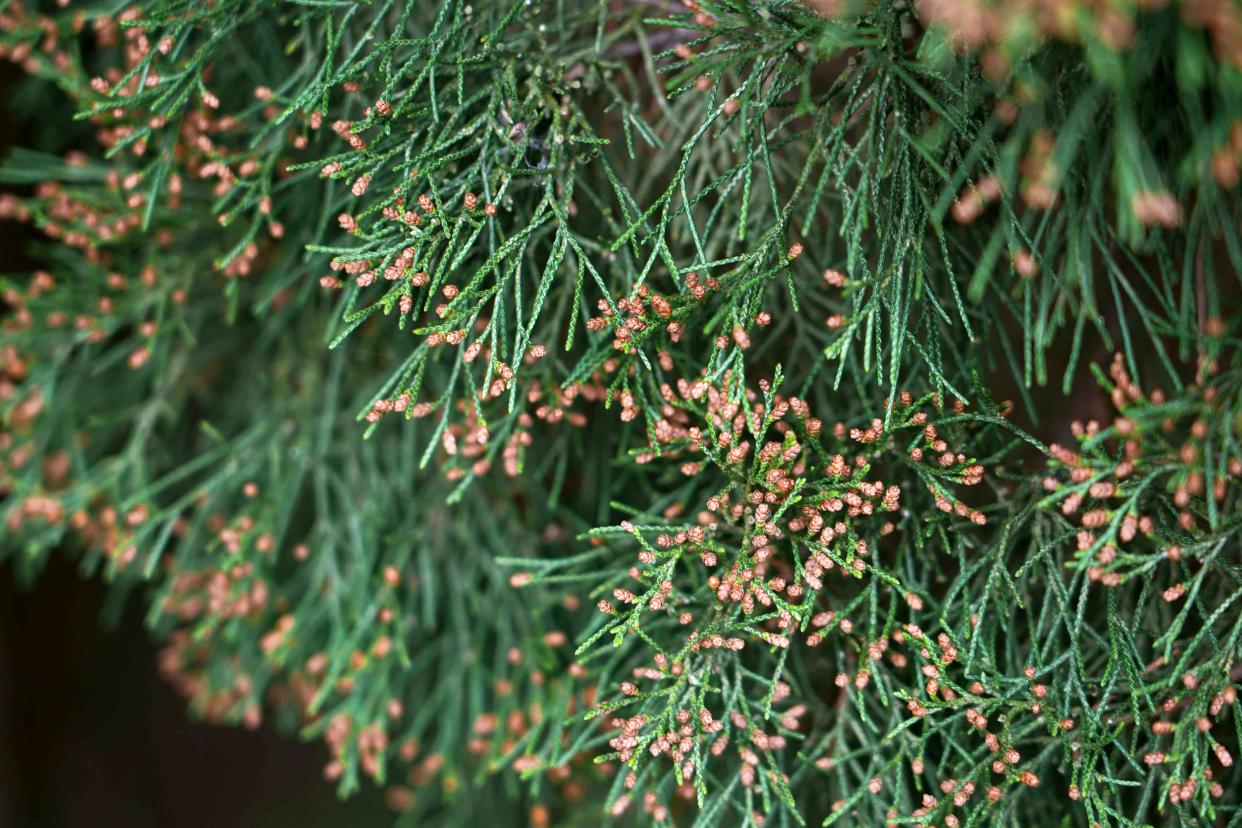
The Spruce / Evgeniya Vlasova
Reviewed by Andrew Hughes
The eastern red cedar is a slow-growing conifer native to eastern North America that is extremely adaptable to various soils and growing conditions. The species' name is a misnomer, with it being a juniper. The adaptable species can grow almost anywhere, giving it a variety of garden uses. It has allowed horticulturalists to develop specific cultivars to suit landscape needs for almost any situation.
Overall the wild type of the eastern red cedar is an attractive needled evergreen with excellent ornamental value due to its winter interest that comes from its startling blue berry-like fruit and gorgeous bark. For those looking to add ecological value, these same cones provide a favorite food source to native birds and wildlife while its lush condensed foliage makes for excellent habitat.
An eastern red cedar or one of its many cultivars may be an excellent choice if you want a conifer to add to your landscape. Although not invasive, these are colonizing trees, so if you plant one, expect many more to pop up in the surrounding area.
Common Name | Eastern red cedar |
Botanical Name | Juniperus virginiana |
Family | Cupessaceae |
Plant Type | Needled evergreen |
Mature Size | 30-65 ft. tall, 8-25 ft. wide |
Sun Exposure | Full sun |
Soil Type | Rich, moist, slightly acidic, well-drained |
Soil pH | 4.7-7.8 |
Hardiness Zones | 2-9 (USDA) |
Native Area | Eastern North America |
Growth Rate | 12-24” per year |
Attributes of the Eastern Red Cedar
Pyramidal
Salt tolerant
Cultivars available
Transplants well
Good for bonsai
Wildlife value
Deer tolerant
Black walnut resistant
Air pollution resistant
Caring for an Eastern Red Cedar
Planting an eastern red cedar can be a big decision that takes a bit of thought. It can be a large tree that grows slowly, meaning it will be around for a while. Luckily while it can be a huge investment space-wise, its relative ease of care means you will not need to sink much time into the care of the tree once it becomes established in the landscape. Fortunately, being a pioneer species (i.e., a hardy species that is the first to colonize barren environments), it does not take much to establish itself in a given location. Care for the species is concerned mostly with protecting other trees in the area from pathogens that the eastern red cedar carries and ensuring that the species' potential for weediness does not allow it to overtake areas where seedlings are not wanted.
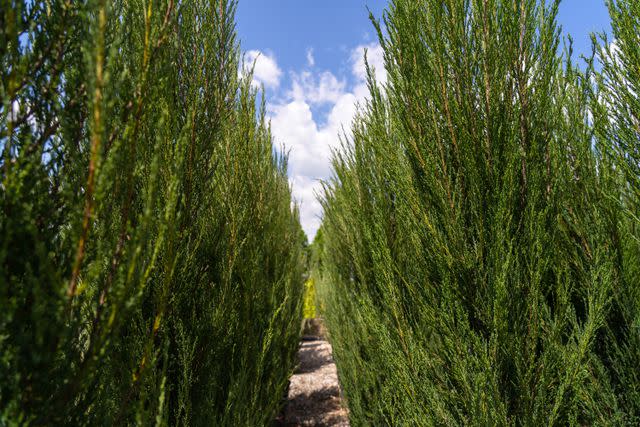
The Spruce / Evgeniya Vlasova
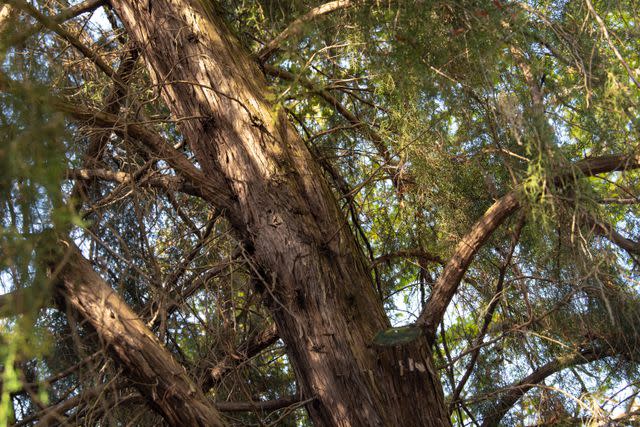
The Spruce / Evgeniya Vlasova
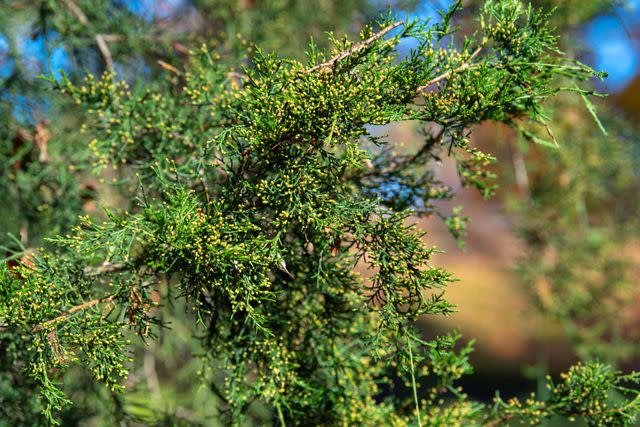
The Spruce / Evgeniya Vlasova
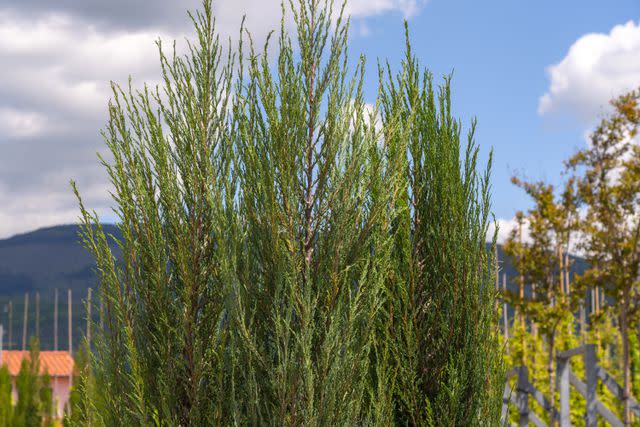
The Spruce / Evgeniya Vlasova
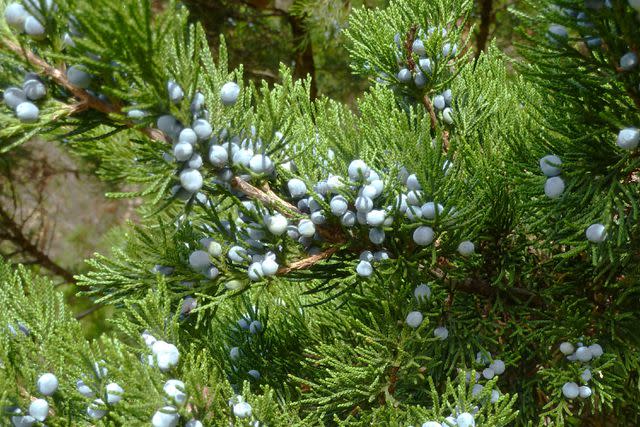
Courtesy of DDM
Light
A young eastern red cedar will do well growing in full sun to part shade, but as it matures, it will do best in full sun areas. Trees grown in less than the full sun that must compete for sunlight will settle into a low-growing shrub-like habit and exhibit a form expressed by more horizontal than vertical growth. If two trees compete, consider removing the smaller of the two to allow the more dominant one to benefit from the full sun as it establishes itself.
Soil
Of least concern to an eastern red cedar's overall vigor and health is the soil conditions it is planted in. The species does well in poor soils that others would not, which makes it able to thrive in the most intolerable conditions. When planted in good conditions, it prefers it will perform exceedingly well, establish itself quickly, and show a marked increase in growth rate. The tree's most preferred conditions would be rich loamy, consistently moist, and well-draining soil. Extremely adaptable, the only condition the eastern red cedar cannot tolerate is standing water. Save constantly soaked roots; this species can deal with almost any soil.
Water
Initially, as it is establishing itself, your eastern red cedar will demand a good amount of water until these needs taper off and the tree develops into a tree that can hold its own against some pretty harsh drought conditions. Until it is established, though, right after planting, it is necessary to give an eastern red cedar plenty of supplemental irrigation for the first two growing seasons. Judging the water needs by the soil dampness is the best bet for the species as the tree constantly demands damp soil without allowing standing water to collect. A good way to judge is to press your finger into the soil to a depth of two inches and feel for the soil's moisture. It is time to water your young tree if the soil is dry. Continue doing this throughout the first two growing seasons, checking a few times a week, especially in the summer, more if there are drought conditions. By the third year, you should be able to start tapering off.
Temperature and Humidity
The range of the eastern red cedar is immense, stretching from eastern coastal Canada south to the Gulf Coast of the United States. There are vast temperature differences in this large swatch of territory, but the eastern red cedar adapts to them all. The commonality is that the temperatures in its growing range never reach extremes. To keep your eastern red cedar healthy and happy, mimic its natural habitat and grow it in moderate temperatures in areas that do not push extreme limits. Keeping it in its happy zones of USDA 2-9 will ensure it thrives.
Fertilizer
Generally, eastern red cedars do not require any supplemental fertilizer. The species thrives in poor soil as a pioneer species. Adding supplemental fertilizer is unnecessary, especially for wild-type trees. Dwarf varieties or varieties with unique forms, such as abundant fruit-bearing cultivars, may require specific fertilizing. It is best to consult any documentation of the particular cultivar for its exact needs.
Types of Eastern Red Cedar
Juniperus virginiana has many cultivars with various traits to suit your functional and aesthetic needs. With nearly 40 cultivars available ranging from dwarf to weeping to silver in color and offering excellent disease resistance, nothing should stand in your way from planting this species in your landscape.
Juniperus virginiana ‘Burkii’: This male cultivar has a pyramidal shape ranging in height from 10 feet to 15 feet with high resistance to cedar apple rust.
Juniperus virginiana ‘Pendula’: This female cultivar has a drooping habit and abundant fruit.
Juniperus virginiana ‘Grey Owl’: The dwarf cultivar with an extremely slow growth rate matures around 6 feet wide and 3 feet tall.
Juniperus virginiana ‘Emerald Sentinel’: This cultivar is superbly vigorous and hardy, thriving in extreme conditions and the harshest conditions while still looking good.
Common Pests & Plant Diseases
The eastern red cedar is luckily free from serious disease and pest issues. The only large concern that many will find to be an issue is that the species acts as an alternate host for a fungal disease, cedar apple rust. While this disease does little harm to the eastern red cedar itself, it can cause serious issues to trees in the Malus family, often causing leaf and fruit damage.
In early spring, fungal galls will emerge on the juniper tree that must be treated with a copper fungicide to prevent the spread of the disease to any susceptible trees nearby. Ultimately to be safe, all trees in the Malus family should be kept 500 to 1000 feet from any possible host.
Frequently Asked Questions
Is the eastern red cedar invasive?
The eastern red cedar is native to many areas in eastern North America but is often considered weedy as it has a tendency to grow readily where it is not wanted. It is a pioneer species and grows in disturbed soils that are meant for development or soils left after fires. So while not necessarily invasive it can be considered a noxious weed.
Is Eastern red cedar good wood?
Even though eastern red cedar is considered a softwood, the wood of the eastern red cedar is considerably stronger than other softwoods and its heartwood is extremely rot-resistant. The wood makes exceptional furniture and is prized as a timber tree.
How long does Eastern red cedar take to grow?
The eastern red cedar grows 12 to 24 inches a year with the oldest specimen estimated at about 940 years old. It has a slow to moderate growth rate.

